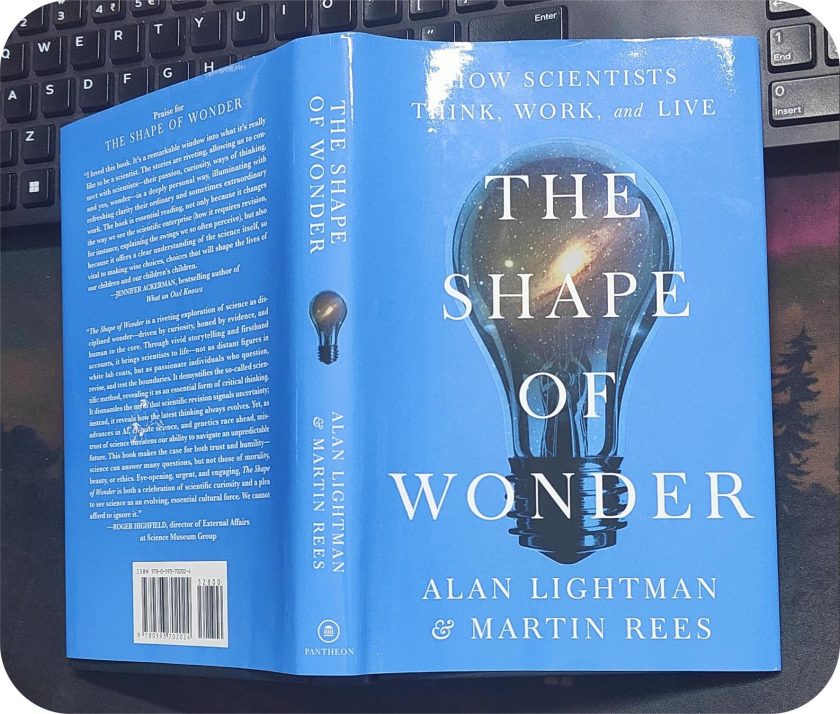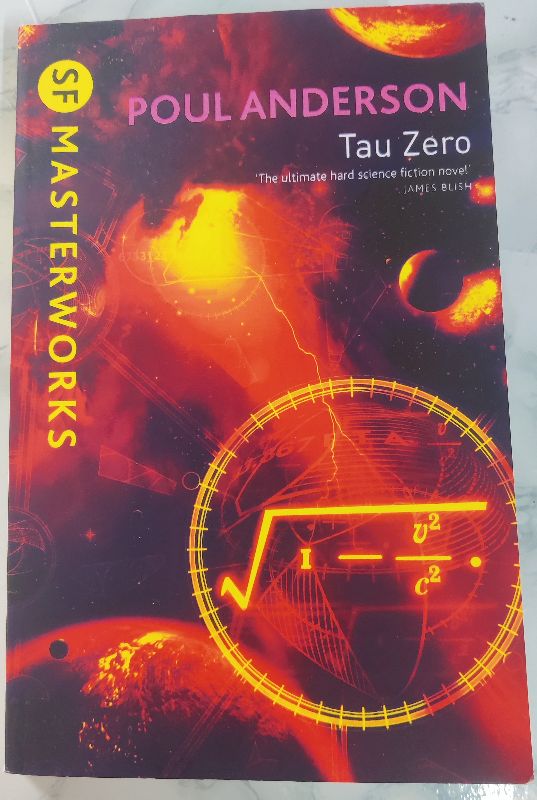
My favourite thought experiment is the notion that as an individual approaches the speed of light, time slows down. Now let’s extrapolate it to Big Crunch scenario. What if an individual travel at the speed of light and reaches the end of universe?
According to Russian Physicist Alexander Friedmann, end of the universe depends on its density. Therefore, universe cannot stay stable for ever, it could either expand or contract. Gravity, with the help of matter, could slow down the expansion, then stop, and ultimately reverse it. Everything collapses within itself to primordial superheated mass. And from there, another Big Bang takes place.
Tau Zero written by Poul Anderson in 1970, takes the approach of time dilation in a similar direction.
The story is set in the future, where intergalactic travel is pretty normal. Humanity has made tremendous progress in space exploration using “Bussard ramjet engines”, assisted by “scoopfield webs”. And from the controlling webwork sprang a field of magnetohydrodynamic forces — invisible but reaching across thousands of kilometers.
Fifty scientists – 25 women and 25 men – aboard the star ship Leonora Christine, to reach a nearby star, Beta Virginis – which is, about 30 lightyears away – in hopes of colonizing a new planet.
Acceleration followed by deceleration
The novel suggests that humanity has already undertaken many voyages of space exploration. Nearest star systems have been investigated with fast-moving ‘probes’ travelling near the speed of light. Hence, Leonora Christine is not one of its kind, at least, not in Tau Zero.
According to the real physics principle of relativity, as an object approaches speed of light, it experiences the slowing of time. So, the mission’s idea is to accelerate for a couple of years, touching the speed of light and maintain that speed for almost one year. Followed by deceleration for another couple of years.
Aim of the undertaking was to locate a habitable planet. And then populate it or else, retreat. Taking time dilation into consideration, the entire mission will take around twelve years while forty-three or more years will pass back on earth.
Accordingly, in its initial years, the ship glides through space smoothly, almost touching the speed of light. And then it passes through an unanticipated nebula. The impact knocks down the ship’s decelerating engines.
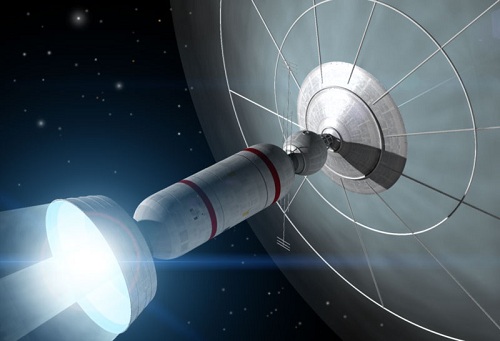
Bussard ramjet engine
Repairing the damage cannot be done. Even if engineers try to scrutinize the problem, they would be vaporised if they fall within the range of super-powerful ion drive. Therefore, no-one can investigate what’s wrong with the decelerator engine until the accelerator engine is turned off.
Bussard engine, after all, is collecting cosmic matter for propulsion.
With the help of huge magnetic fields, also known as “ram scoop”, the machine is scooping up interstellar protons (ionized hydrogen). The protons are then compressed to give out thermonuclear fusion. Simultaneously, the magnetic fields are redirecting that energy into rocket exhaust to produce thrust. The faster the ship travelled, the higher the proton flow, and the greater the thrust.
“Starlike burned the hydrogen fusion, aft of the Bussard module that focused the electromagnetism which contained it. A titanic gas-laser effect aimed photons themselves in a beam whose reaction pushed the ship forward – and which would have vaporised any solid body it struck. The process was not 100 percent efficient. But most of the stray energy went to ionise the hydrogen which escaped nuclear combustion. These protons and electrons, together with the fusion products, were also hurled backward by the force fields, a gale of plasma adding its own increment of momentum.” (p.40)
Therefore, to check the engines, they cannot turn the accelerator off. The accelerator engines and scoopfield webs are working in tandem in directing the hydrogen atoms interspersed throughout space away from the ship and down into the ion drive.
In a way, the ion drive is acting as a sheath to the ship. If it is turned off, the hydrogen atoms will start bombarding the ship’s hull. The spacecraft is already moving with the highest speed so in effect of bombardment, hydrogen atoms will split and release gamma rays. Once gamma rays come into momentum, it will easily perforate the hull and fry all the humans inside in less than a second.
So, Leonora Christine drifts, at the speed of light, across the endless cosmic landscape.
Tribulation after the impact
While inside the ship, we witness various insights of the characters. Discussions raging from decorating the canteen and common rooms, paint murals and have numerous affairs. Yes, the Leonora Christine is a small township in itself. It is equipped with large gym, a theatre, a canteen, and a swimming pool.
After the impact with the giant gas cloud, hopelessness takes over. With no option of deceleration, the original plan of exploring an earth-style planet goes defunct. Even the intelligent minds feel the pangs of utter despondency when they know they have no future.
Eventually, they start fighting over petty things, most of them have nothing to do except getting drunk. Casual sex and melancholy thoughts become the new norm. Some feel suicidal as they can’t imagine their future life. In wake of uncertainly their current relationship begins to fall apart and new casual relationships are formed.
Their dialogues and thoughts make us see into the emotional and psychological states of the fifty crewmembers. They are also a community of individuals, who at the sight of adversity are trying to make a life for him or herself in space.
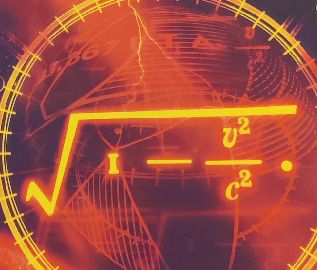
Tau equation
In between, Anderson gives us the tau equation, which is the interdependence of space, time, matter, and energy.
Tau equals the square root of 1 minus v² divided by c², where,
v = velocity of the spaceship, and
c = velocity of light.
Therefore, when the velocity of the spaceship reaches the speed of light, then v² divided by c² gets closer to 1. Hence, 1 minus something that is closer to 1 gets closer to 0. And the square root of that number also approaches to 0.
In simple words, when tau gets closer to zero, the spaceship flies faster. Its mass will also become greater and people inside the ship will experience the time slower, with respect to the rest of the universe, which apparently, seems static.
To fly beyond space
While most of the crewmembers were feeling lost, few dared to find some hope. Likewise, they suggested that the space in which they are moving is saturated with hydrogen atoms especially regions that contain clusters of galaxies. So, if they travel fast enough to leave that space and enter region with less hydrogen atoms, they have a chance to fix their ship.
As they move farther and faster, they realise time slows down for them. And secondly, there is no region in space that has less hydrogen atoms, relatively.
By the time, they fly past the entire cluster of galaxies, they realised that millions of years have passed – their tau gets closer to zero.
Another problem they faced is that empty space is now too dispersed to allow them to slow down. There is not enough matter (in their current region of empty space) for the engine to latch on to and use as fuel to decelerate. The only option they are left with is to continue with their acceleration.
“The accessible mass of the whole galactic clan that was her goal proved inadequate to brake that velocity. Therefore she did not try. Instead, she used what she swallowed to drive forward all the faster. She traversed the domain of this second clan – with no attempt at manual control, simply spearing through a number of its member galaxies.” (p.151)
To pass through galaxy of low intensity red dwarfs
After travelling through another hundreds of millions of years, they (with the help of their astronomical instruments) concluded that the galaxies they are flying through are not the regular ones, rather they are made up of low intensity red dwarfs and empty space. Which means, the ship is in and around the last star in the universe. According to the astronomical data, after crossing the threshold of red dwarfs, life for humanity becomes un-inhabitable.
Astronomers in Leonora Christine estimated that they have travelled far beyond the universe and into “the future”. The stars are retreating and the space of the universe is contracting.
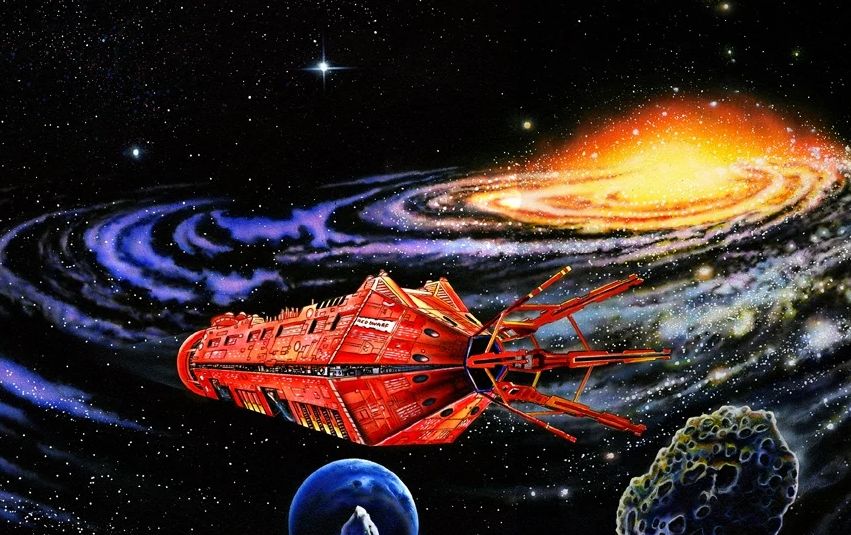
The primal singularity
Anderson here is working on the theory of Big Bang, that led to the expansion of universe for billions of years. After reaching a point when the force of gravity overpower expansion, the cosmos may move towards a “Big Crunch”. Eventually, the universe will collapse within itself – the primal singularity or the seed of another universe.
Singularity, suggested by the scientists in the book, is not a minute particle rather it’s an enormous hydrogen envelope.
“The fact is, nobody knows for sure what’s going to happen. My guess is that everything will not get squeezed into a single zero-point Something. That’s the kind of oversimplification which helps our math along but never does tell a whole story. I think the central core of mass is bound to have an enormous hydrogen envelope, even before the explosion. The outer parts of that envelope may not be too hot or radiant or dense for us. Space will be small enough, though, that we can circle around and around the monobloc as a kind of satellite. When it blows up and space starts to expand again, we’ll spiral out ourselves.” (p.175)
Thus, the reader is prepared to face such an action. No sooner the ship reached an infinitesimal value of tau, it flew right through the Big Crunch. And stepped into the new universe which exploded outwards.
The new universe
In the end, the people of Leonora Christine found their new universe, which had earth-like atmosphere but blue vegetation.
“Here was not New Earth. That would have been too much to expect. The river far below them was tinted gold with tiny life, and ran through meadows whose many-fronded growth was blue. Trees looked as if they were feathered, in shades of the same color, and the wind set some kinds of blossoms in them to chiming. It bore scents which were like cinnamon, and iodine, and horses, and nothing for which men had a name. On the opposite side lifted stark palisades, black and red, fanged with crags, where flashed the horns of a glacier.” (p.188)

Takeaway
Tau Zero is the most spectacular work of science fiction that I have read so far. The book is a journey that takes us to the core of the galaxy.
The most beautiful part of the book is, the entire premise is based on real physics of the time. In fact, it was written in 1967-1970, a few years before Sagittarius A was discovered in 1974. In addition, ion drive, the scoopnets, hydrogen fusion, the “working” theory of relativity or the effect of relativistic travel is pure awe.
Strange view of the stars distorted into clusters and experiencing the Doppler shift, everything was happening in front of our eyes, all seemed so ethereal.
Getting close to the Big Crunch and the eventuality of primal singularity and into the subsequent universe is quite convincing.
I am totally in awe with Tau Zero. Huge respect for Poul Anderson. I loved the ideas; I’m sure this book might have inspired the next generation sci-fi writers of the times.
If you are into science fiction or intergalactic travel, this book is a must!


